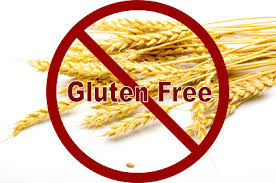While I was in Utah last week, I spent some time talking to a friend who is suffering from celiac disease and as such, they are allergic to gluten. For some reason this is a condition that seems to be becoming more common. I have heard many different people speculate on the cause of celiac disease, but there seems to be no proven reason for this increase.
Her big question was now that she has been diagnosed as having celiac disease, how does this affects her food storage? In the past she has stored the typical items that include wheat and other foods that contain gluten
As I told her, she still has lots of options. There are many other grains that she can store and she can still eat part of her existing food storage. The list of grains and legumes that people with celiac disease can eat includes the following and they can all be made in to flour for baking.

- Beans of all types including soy
- Rice, white
- Brown rice, only stores for 6 months
- Quinoa
- Amaranth
- Millet
- Buckwheat
- Corn
- Oats, because there are often processed in the same plants as wheat, you may need to get oats that are certified gluten free.
The best option for long-term storage is to store the products whole and grind them, as you need them. They should be stored in oxygen free environments. I like five gallon plastic buckets, Mylar bags and oxygen absorbers.
Eggs are used in gluten free baking to bind the ingredients together. Therefore you should store extra powdered eggs. Many gluten free recipes call for whole eggs and additional egg whites, so having both on hand is important.
Tapioca can help to combat the heavy, dry texture of many gluten free products. Vinegar: is an economical version of store-bought gluten free dough enhancers.
Other foods that store will for people with celiac disease include.
- Dehydrated fruits and vegetables
- Freeze-dried meats
- Dehydrated potatoes
- Powdered eggs
- Powdered milk
- Powdered butter
- Canned vegetables
- Spam
- Canned Fish
- Gluten free bouillon cubes
- Salts, peppers and herbs
If you are canning or dehydrating these yourselves, you know what goes into them. If you are using store bought read the label so that you are sure of what you are purchasing. You should not buy products containing any of the following ingredients. ale, barley, beer, bleached flour, bran, bread flour, brewer’s yeast, brown flour, brown rice syrup, bulgur, couscous, dextrin (unless source gluten-free), durum, farina, farro, hydrolyzed vegetable (wheat) protein, gluten flour, graham flour, granary flour, groats, harina, kumut, malt, malt extract, malt syrup, malt vinegar, matzo, modified starch (unless source gluten-free), rye, orzo, semolina, self–rising flour, spelt, smoke flavoring, soy sauce, wheat germ, wheat and white flour, whole meal flour, and vegetable gum.
The bottom line is that you need to check everything yourself and relearn how to cook with the new ingredients. Get a good gluten free cookbook. Don’t let it overwhelm you. You can do it.
There are some long-term storage foods on the market that claim to be gluten free and I assume that they are. However, I have noticed that they are quite expensive.
Howard


This comes at a good time for us. We have recently determined that our 26 year old son has become gluten intolerant. We have done this through hit or miss as he is on disability and his medicare does not start until next month. The charity clinic he was seeing wasn’t really helpful in trying to figure out why everything seemed to be making him sick.
Thank you so much for this list. The process of identifying gluten free foods has seemed daunting indeed.
We are still in the beginning prepper stage as well, so I appreciate all your tips and insight.
God bless.
You said ” … ◾Brown rice, only stores for 6 months …”
That used to be true. I’m not sure that it still is.
A few days ago I bought a 5# bag of Tsuru Mai (California grown) brown rice at my local Raley’s store. It is packaged in a sealed heavy plastic bag. Small letters on top of the bag say “Nitrogen Flushed For Freshness”. There is no “best by” or “use by” date anywhere on the bag and there is there no easily discernible packaging date on the bag.
Could it be that the old warning of a 6 months shelf life was due to rancidity caused by oxidation when packaged in permeable cloth or paper sacks or cardboard boxes. IF the nitrogen flush and use of an impermeable plastic bag prevents this oxidation then brown rice should have a much longer shelf life. Further, IF oxidation prevention prolongs shelf life then vacuum packing your brown rice in glass canning jars should also prolong its shelf life. It’s worth thinking about.
Hangtown Frank
I think the 6 months still applies from everything I read from BYU
Howard
Celiac disease is real, gluten intolerance not so much “https://www.youtube.com/watch?v=Oht9AEq1798”.